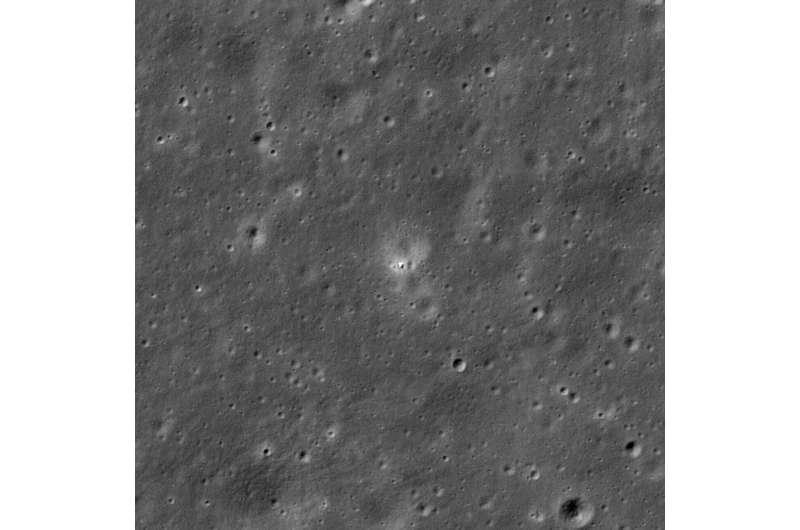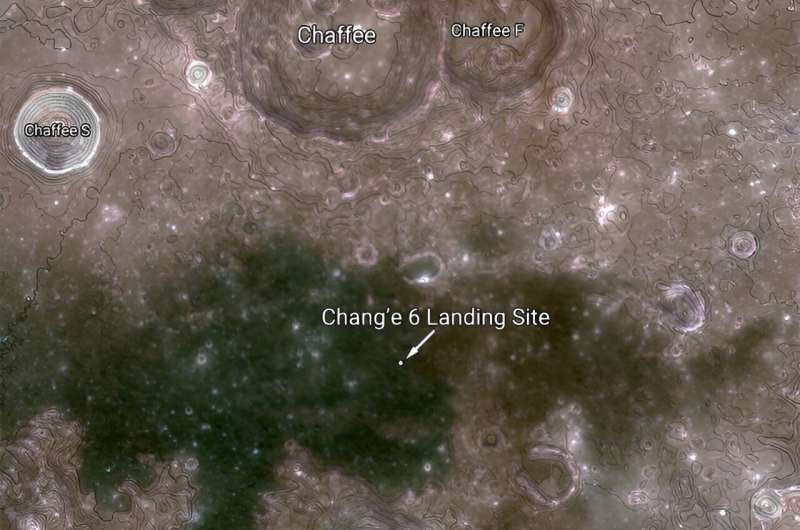NASA's LRO (Lunar Reconnaissance Orbiter) imaged China's Chang'e 6 sample return spacecraft on the far side of the moon on June 7. Chang'e 6 landed on June 1, and when LRO passed over the landing site almost a week later, it acquired an image showing the lander on the rim of an eroded, 55-yard-diameter (about 50 meters) crater.
The LRO Camera team computed the landing site coordinates at about 42 degrees south latitude, 206 degrees east longitude, at an elevation of about –3.27 miles (–5,256 meters).
The Chang'e 6 landing site is situated toward the southern edge of the Apollo basin (about 306 miles or 492 km in diameter, centered at 36.1 degrees south latitude, 208.3 degrees east longitude). Basaltic lava erupted south of Chaffee S crater about 3.1 billion years ago and flowed downhill to the west until it encountered a local topographic high, likely related to a fault.
Several wrinkle ridges in this region have deformed and raised the mare surface. The landing site sits about halfway between two of these prominent ridges. This basaltic flow also overlaps a slightly older flow (about 3.3 billion years old), visible further west, but the younger flow is distinct because it has higher iron oxide and titanium dioxide abundances.

Provided by NASA



